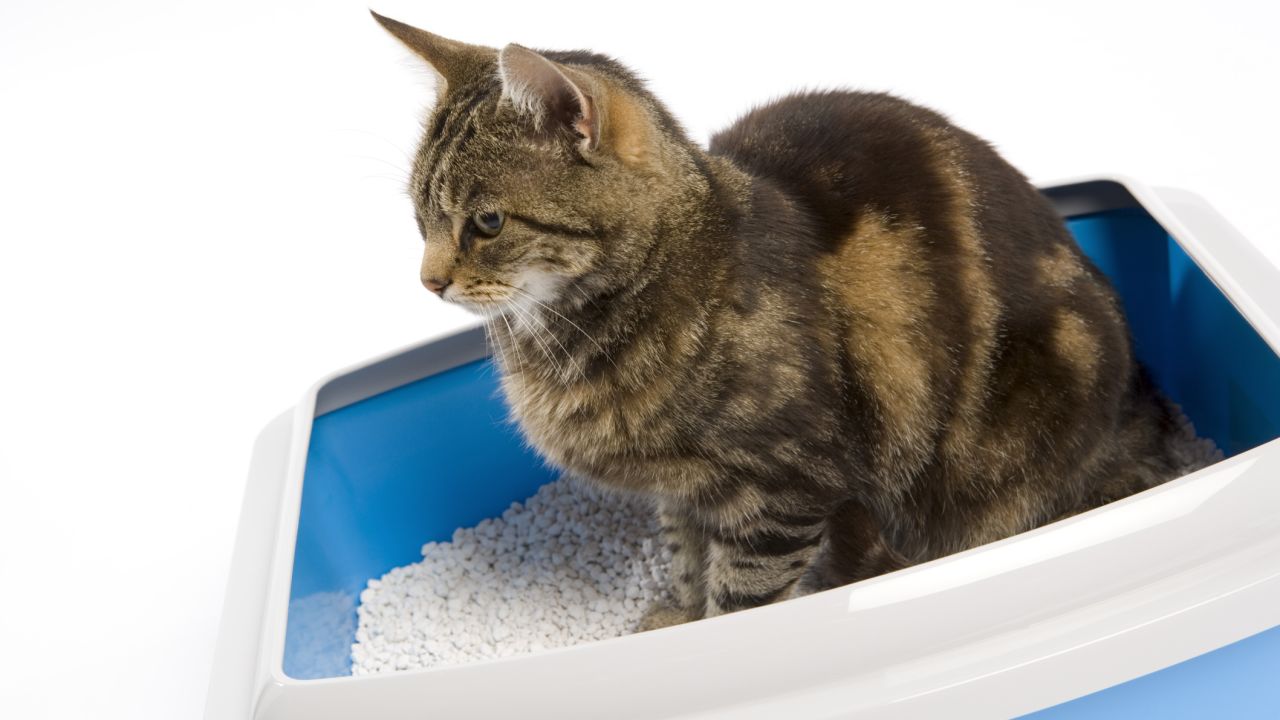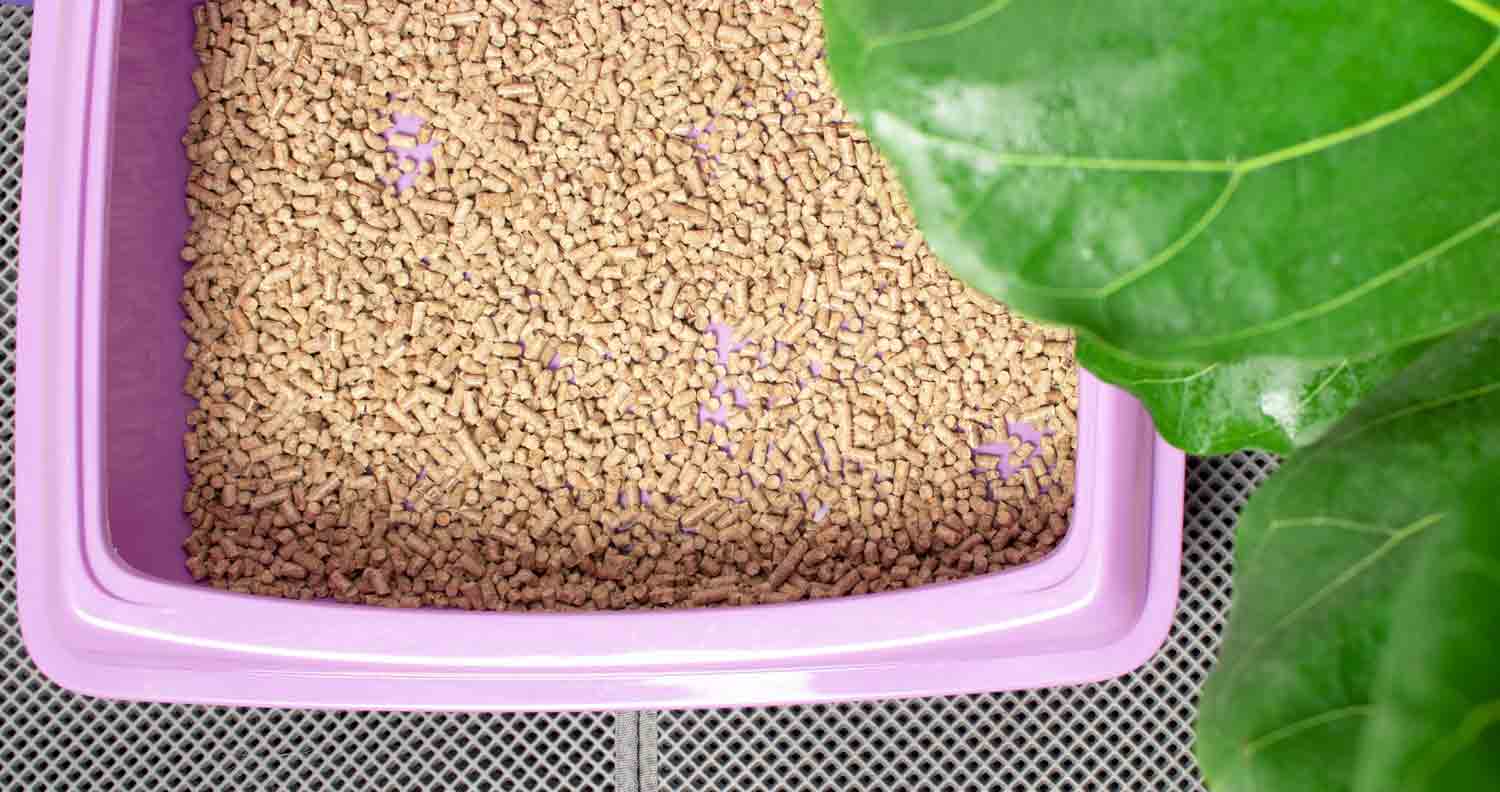Cat litter can have various impacts on the environment, both good and bad.
Cat litter comes in different forms and each type poses unique risks and benefits.
Let’s take a detailed look to better understand if it harms ecosystems.
Is Cat Litter Bad For The Environment?
Overall, certain types of cat litter can be problematic for ecosystems while other varieties are quite eco-friendly.
Sustainably sourced, chemical-free natural litters are the best option.
With informed choices and proper disposal, cat litter’s environmental impact can be minimized.
Key Points
- Clay litters often utilize strip mining, contributing to deforestation and habitat loss. The clay particles may also pollute waterways.
- Silica gel litters require non-renewable silica sourced through disruptive mining processes. Inhaled silica dust poses health risks.
- Natural paper, wood, wheat, and plant-based litter made from recycled or renewable materials are biodegradable and eco-friendly options.
Is Cat Litter Bad for the Environment?
With over 74 million pet cats in the US, cat litter usage is widespread.
Its manufacturing, use, and disposal all affect the planet.
Certain litters also contain harmful chemicals that can pollute soil and waterways when dumped.
Evaluating cat litter’s total eco-footprint helps identify truly green options that keep cats and nature safe.
What Materials Go Into Different Cat Litters?
The raw components that comprise cat litter form the basis of its ecological impact.
Common litter ingredients include:
- Clay – Strip-mined from the earth, clay litters can spur deforestation and soil erosion when harvested unsustainably. Clay particles may also enter and pollute water sources.
- Silica gel – Silica litters utilize non-renewable silica extracted from sand/rock. The mining process can harm local habitats.
- Recycled paper – Paper litters made from recycled materials prevent waste from entering landfills. But bleaching may release toxins during production.
- Wood pellets – Sourced from sustainable forestry, these litters are biodegradable and eco-friendly. Look for recycled or sustainably harvested wood.
- Corn and wheat – Litters utilizing natural waste material help utilize what would otherwise pollute as agricultural runoff.
- Plant-based – Litters made from sustainable materials like bamboo avoid environmental damage associated with clay and silica gel.
How Does Litter Packaging Impact the Environment?
Most cat litters come packaged in plastic jugs and bags, which end up in landfills.
Seek litter using recyclable, compostable, or reusable packaging to minimize waste.
For example, paper bags, cardboard boxes, and plant-based pouches have smaller eco-footprints than single-use plastics.
How Do Manufacturing Processes Affect Sustainability?
Some litters undergo chemical processing and high heat during manufacturing, consuming substantial energy and releasing emissions.
Choosing more natural, low-impact production methods reduces environmental harm.
For instance, heating and extruding wood pellets have a lighter footprint vs. strip mining clay.
Does Cat Litter Biodegrade or Linger When Disposed?
Most clay litters are non-biodegradable and remain intact for years after disposal.
This slow breakdown allows more opportunity for runoff contamination.
In contrast, paper and plant-based litters safely decompose faster.
Can Cat Litter Be Recycled or Composted?
Unfortunately, traditional clay litter cannot be recycled or composted.
However, newer options like paper, wood, wheat, and plant-based litter can biodegrade and/or go into municipal composting programs.
Recycling packaging is another eco-friendly disposal method for certain brands.
Which Cat Litters Are Most Eco-Friendly Overall?
When assessing all sustainability factors, natural plant-based litters rank among the best options currently available.
Materials like pine, wheat, and newspapers minimize environmental harm across production, use, and disposal.
Litters utilizing recycled/compostable packaging are also excellent choices for eco-conscious cat owners.
What Role Does Proper Disposal Play?
Discarding any cat litter irresponsibly can pollute ecosystems.
Never dump litter into storm drains, sewers, or backyard compost piles.
Instead, follow local guidelines for appropriate disposal methods based on the specific litter used.
This helps prevent contamination from entering soil and waterways.
Can Clumping Litters Harm the Environment?
Clumping litters use sodium bentonite clay that does not biodegrade.
The clay swells when wet and forms clumps for easy scooping.
However, the clay can damage pipes and septic systems if flushed and may leach contaminants over time when landfilled.
Look for plant-based alternatives to avoid these concerns.
Do “Flushable” Litters Impact Ecosystems?
Although some cat litters claim flushability, they simply break into tiny pieces rather than dissolve fully.
These micro-particles then enter and pollute waterways, impacting marine life once flushed.
Even litter marketed as flushable should not be disposed of down the toilet.
Is Silica Litter Bad for the Environment?
Silica gel litters are highly absorbent but pose some environmental issues.
Silica particles can be inadvertently inhaled by cats and humans during use.
The mining process also harms local habitats.
While silica litters are effective, eco-friendlier alternatives exist.
Are Natural Pine and Wheat Litters Good Options?
Pine and wheat litters provide eco-friendly biodegradability.
Their raw materials are typically agricultural industry byproducts that would otherwise go to waste.
These litters break down safely when composted or landfilled without major pollution risks.
Just beware of litter that uses unnecessary chemical additives.
How Does Cat Litter Pollution Affect Ecosystems?
When cat litter enters the environment through runoff or improper disposal, it can have detrimental effects on ecosystems.
Clay particles from traditional litter persist for years and may leach harmful substances as they slowly break down.
This can alter the chemistry of soil, harming the microorganisms that inhabit it.
If cat litter enters waterways, it can increase turbidity, reducing the light accessible to aquatic plants.
The chemical additives in some litters may be directly toxic to fish, invertebrates, and amphibians.
Clumping compounds like bentonite clay can also damage wildlife habitats and food chains by altering the availability of nutrients and minerals that organisms depend on.
Overall, keeping all forms of cat litter from entering natural systems is crucial to avoid disturbing the complex balance of biological communities.
Can Compostable Cat Litters Be Safely Used?
Certain plant-based cat litter are marketed as compostable, meaning they can biodegrade naturally.
However, most municipal and backyard compost piles do not reach high enough temperatures to break down cat litter and kill dangerous pathogens that may be present.
The primary risk is contamination from toxoplasma gondii, a parasite shed in cat feces that can infect humans and wildlife.
Therefore, it is not recommended to compost any type of used cat litter at home.
However, some facilities are equipped to safely sanitize and decompose biodegradable cat litter products.
Cat owners should check if their city’s municipal green waste program accepts specified compostable litter before disposing to avoid contamination issues.
How Do Ingredients in Cat Litter Impact Indoor Air Quality?
Some ingredients used in cat litter can degrade indoor air quality when dispersed into the air.
Clay litters produce dust that may contain free crystalline silica, a known carcinogen.
Litters with perfumes and deodorizers also release volatile organic compounds, or VOCs, which can irritate the lungs.
Switching to dust-free natural litters can improve the health of both cats and owners.
Pellet-style litters minimize airborne particles, while plant-based options avoid chemical fragrances.
Proper litter maintenance is also key – sifting daily and promptly disposing of soiled litter prevents saturating the box and releasing more contaminants into the home’s air.
With informed choices and vigilant cleaning habits, cat owners can maintain excellent indoor air quality.
Can Cat Owners Limit the Environmental Impact of Litter?
There are several steps cat owners can take to reduce the ecological pawprint of their cat’s litter:
- Choose plant-based litter with eco-friendly ingredients like recycled paper, wheat, pine, or corn. Avoid clay, silica, and chemical additives.
- Opt for litter with compostable packaging like paper bags instead of plastic tubs and jugs. Or buy in bulk.
- Scoop litter daily and replace it regularly to minimize odor and maximize effectiveness. This uses less litter over time.
- Dispose of litter properly based on type. Never dump it into backyard compost.
- Recycle or compost packaging when local facilities allow it.
- Buy from brands that use renewable energy and environmentally sustainable practices.
With informed purchases and proper care, owners can satisfy their cats’ needs while minimizing the impact of litter on the planet.
How Do Cat Litters Without Chemicals Protect Health?
Many standard cat litters contain concerning ingredients like perfumes, deodorizers, clumping agents, and artificial dyes.
These chemical additives can release hazardous fumes and substances that are dangerous for cats and humans when inhaled or touched.
Fragrance chemicals in particular can irritate lungs and airways.
Clumping agents like bentonite clay may also contribute to feline hyperthyroidism.
Choosing a litter made from natural materials like pine, wheat, or recycled paper avoids these toxins.
Chemical-free options are safer for pet and owner health since they do not degrade into noxious byproducts.
The Bottom Line: Is Cat Litter Bad for the Environment?
Traditional clay litters have the largest environmental impact based on sourcing, manufacturing, and disposal.
However, more sustainable plant-based options utilize renewable materials in a closed-loop cycle.
Overall, eco-conscious choices like pine, wheat, and recycled paper litter can give cats a safe, effective place to do their business while protecting the planet.
Just be sure to choose natural ingredients packaged in recyclable or compostable containers.
And never flush or dump any type of cat litter, which allows contaminants into ecosystems.
With informed decisions and proper disposal, cat litter can be an environmentally responsible choice for caring pet owners.
FAQ
What is the most sustainable cat litter?
Litters made from recycled paper, wood pellets, wheat, and natural plant materials like pine and corn are the most eco-friendly. They biodegrade quickly and prevent waste from entering landfills.
How does clay litter affect the environment?
Most clay litters utilize strip mining, which damages landscapes and ecosystems. The clay particles can also enter and pollute rivers, lakes, and streams when dumped or flushed.
Should you flush cat litter?
No type of cat litter should be flushed, even those labeled “flushable.” The particles and chemicals can contaminate water supplies and harm marine life. Always dispose of used litter appropriately.
Is silicone crystal cat litter environmentally friendly?
Silica crystal litters are highly absorbent but the mining process harms ecosystems. Inhaled silica dust also poses health risks to pets and owners. More eco-friendly litters are available.
Can cat litter be composted or recycled?
Traditional clay litter cannot be composted or recycled. However, newer options like wood, wheat, paper, and plant-based litter can safely break down in municipal composting programs. Their packaging may also be recyclable.
At GreenChiCafe, we are passionate about the environment and our natural world. Check out our website for more great content on eco-friendly living.

Annie is a passionate environmental writer and activist. She has been writing about sustainability, conservation, and green living for over 15+ years. Annie is dedicated to raising awareness about environmental issues and providing practical tips for living an eco-friendly lifestyle. When she’s not writing, you can find her volunteering with local environmental organizations, teaching workshops on zero waste living, or exploring nature. Feel free to get in touch with Annie: annie@greenchicafe.com


